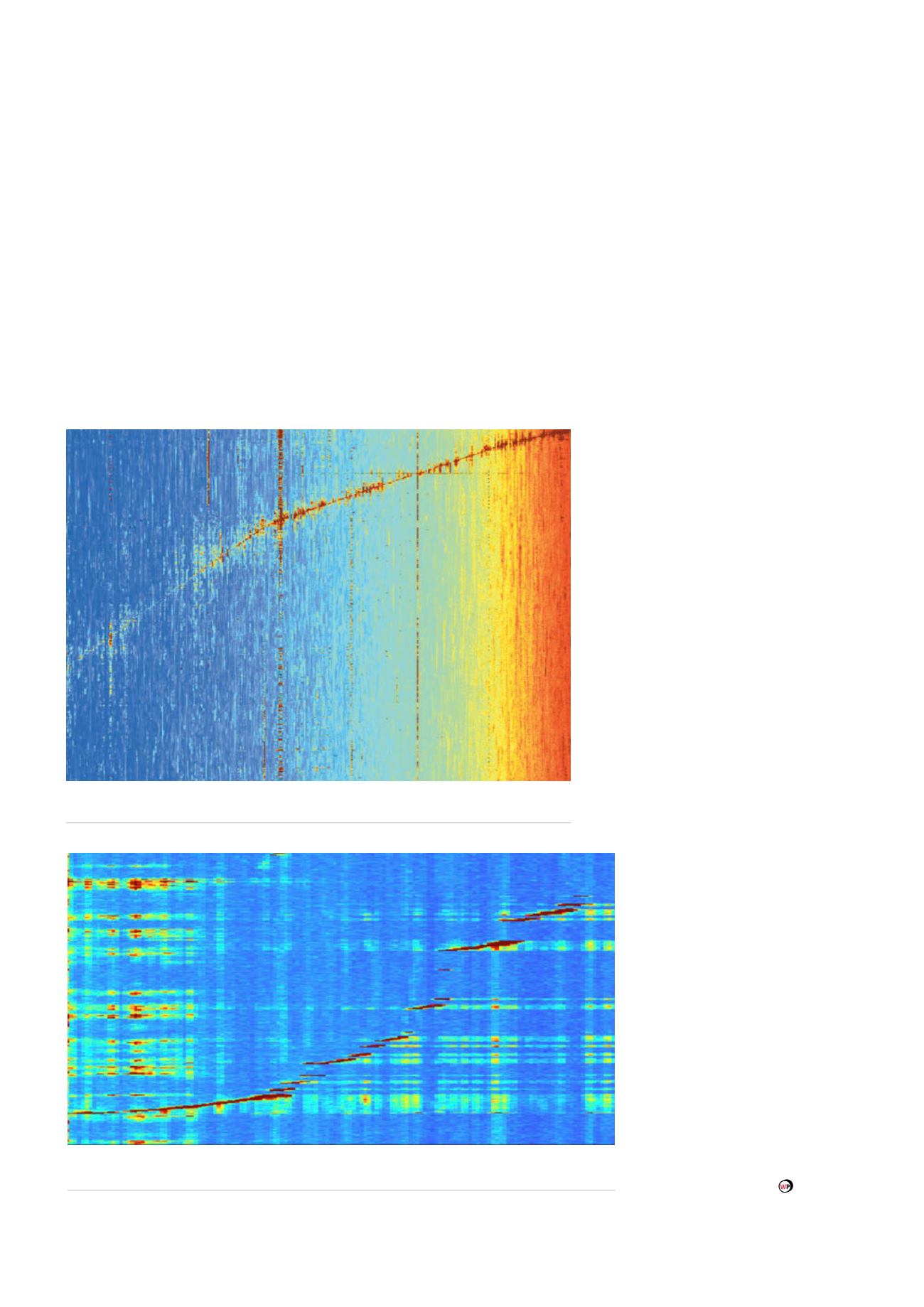
bring as much information as possible on the transit of the
next device. OptaSense eliminates both the cost of the all
of the manpower associated, and in most cases, the effort
associated with the next pigging run – the information is
already known.
The worst case, however, is when a pig is accepted
as being stuck – but the information will only vaguely be
known – an inaccurate estimate may be provided from a mass
balance system for example. But this is often only accurate
to a few kilometres. The next and fairly serious step may be
to drill a hole in the pipe to try and establish whether you
are upstream or downstream of the pig – narrowing in on
the device. Finally, when it is close, a large section of land
might be excavated until it is fully zoned in on and cut out.
OptaSense can reduce these costs to a bare minimum by
identifying the location of the device to within a few tens
of metres from the trace and then on the ground by simply
walking up and down the controller can direct the field team
to the precise last location of the pig – accurate to ~10 m.
Finally, in the case of waxy deposits or condensate lines,
if there is a concern that a build-up of deposits or particular
geometry issues may lead to a potential stuck device, the
speed profile of each run can be compared back to the
flow profile or pressure profile and locations where marked
speed deviations are evident, and can be easily identified
and marked for careful live observations during subsequent
transits. Potentially avoiding more damaging incidents – or
feeding into a control loop to ensure that speed is kept above
a minimum. Note that without live feedback, speed profiling is
only ever achieved during the infrequent statutory inspections
– every run between that is carried out
largely blind.
Conclusion
Pigging is one of few activities that
are carried out on pipelines that are
of significant importance, have major
cost implications and yet are so poorly
monitored: other than during instrumented
inline inspection – where the data can only
be reviewed after the event. There is a need
to provide feedback to pigging operations –
to keep the man out of the field, to provide
dynamic control and to provide knowledge
over the status of the pipeline. Rather than
aggregating that information to a summary
of what was extracted from two remote
points or how long the transit took, there is
a need for a better solution.
Live pigging observation from DAS can
provide this mechanism by placing ears
every 10 m along the pipeline – giving the
controller immediate feedback on the status
of their operations. This has the
potential to deliver significant cost
savings and safety enhancements
by allowing staff to monitor pigging
activities safely from the control
centre and can vastly decrease the
costs of dealing with devices stuck
in pipes.
The benefits of using DAS for
pigging operations have been rapidly
realised by those customers who
have invested in DAS for pipeline
leak detection or pipeline leak
prevention operations: there is
significant benefit in either using
DAS as a service during pigging or
inline inspection operations – or as
part of a permanent fit. All that is
required is a fibre optic cable in the
vicinity of the pipeline.
Figure 6.
An example of a cleaning pig in a gas pipeline experience momentary stops in
transit due to a combination of pressure and fit.
Figure 5.
Example from a North African installation where a change in flow
conditions in a first charge on a gas pipeline results in an abrupt change in speed.
90
World Pipelines
/
FEBRUARY 2016


